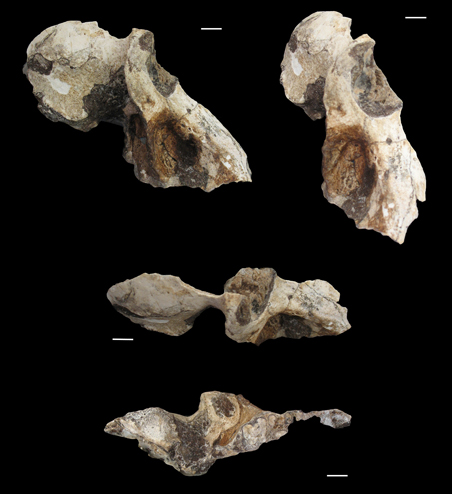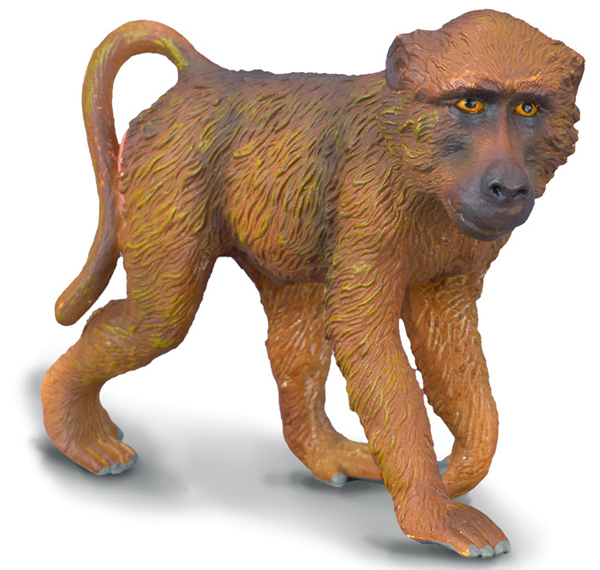Earliest Baboon Fossil Identified from World Heritage Site
Earliest Baboon Papio angusticeps – An Ancestor of Modern Baboons
A team of international scientists including researchers from Witwatersrand University (South Africa), have discovered the fossils of the earliest known baboon. The partial skull of a new species, which has been named Papio angusticeps has been dated to around 2.026 to 2.36 million years ago was found at Malapa, in the Cradle of Humankind World Heritage Site, which is located about thirty miles north-west of Johannesburg in Gauteng Province, South Africa.
Earliest Baboon Fossil Discovery
The baboon fossils come from the same site where the partial remains of the early hominin species, named Australopithecus sediba, were discovered in 2010.
To read Everything Dinosaur’s article on the discovery of A. sediba: New Fossils May Shed Light on Human Ancestry.
Baboons and Hominins May Have Competed for Resources
Commenting on the study, lead author Dr Christopher Gilbert (Hunter College of the City University of New York), explained that the rise of the baboons was contemporaneous with the rise of that part of the hominin family tree that resulted in our own species.
Various Views of the Skull Fossil (Papio angusticeps)
Picture credit: Witwatersrand University
He commented:
“Baboons are known to have co-existed with hominins at several fossil localities in East Africa and South Africa and they are sometimes used as comparative models in human evolution.”
Earliest Baboon
As one of the largest, non-hominin members of the primate Order, these intelligent animals would have competed with our ancestors for food, shelter and other resources. The skull fossil is very similar to that found in a modern baboon species, (Papio hamadryas), one of five species in the Papio genus and the species of baboon that lives the furthest north. Its range is from the horn of Africa across the Arabian Sea into the Arabian peninsula.
Despite the record of baboon fossils from a number of hominin sites, the evolution of modern baboons is not well understood and the fossil record for these large Old World monkeys is very poor.
Fragmentary Fossil Record
Dr Gilbert added:
“According to molecular clock studies, baboons are estimated to have diverged from their closest relatives by 1.8 to 2.2 million years ago. However, until now, most fossil specimens known within this time range have been either too fragmentary to be definitive or too primitive to be confirmed as members of the living species Papio hamadryas. The specimen from Malapa and our current analyses help to confirm the suggestion of previous researchers, that P. angusticeps may, in fact, be an early population of P. hamadryas.”
A Model of an Extant Male Baboon
Picture credit: CollectA
For CollectA models and prehistoric animal figures: CollectA Prehistoric Life Models.
Dr Gilbert, a specialist in early primate evolution explained:
“If you placed a number of P. angusticeps specimens into a modern osteology collection, I don’t think you’d be able pick them out as any different from those of modern baboons from East and South Africa.”
In addition, the estimated age of the Malapa specimen (2.026 to 2.36 million years old), is an almost perfect fit with molecular clock analyses for the initial appearance of modern baboons. The skull may help to solve the evolutionary origins of these highly adaptive mammals. Furthermore, as monkeys are widely recognised as key time-sensitive elements in the fossil record, the fact that the Malapa P. angusticeps specimen is well-dated allows future studies to better estimate the age of fossil sites where the species is found.
This may prove particularly helpful when attempting to date early hominin sites in South Africa. The presence of these baboon fossils, may be able to help scientists achieve more accurate age estimates for any early hominin remains found in situ.



